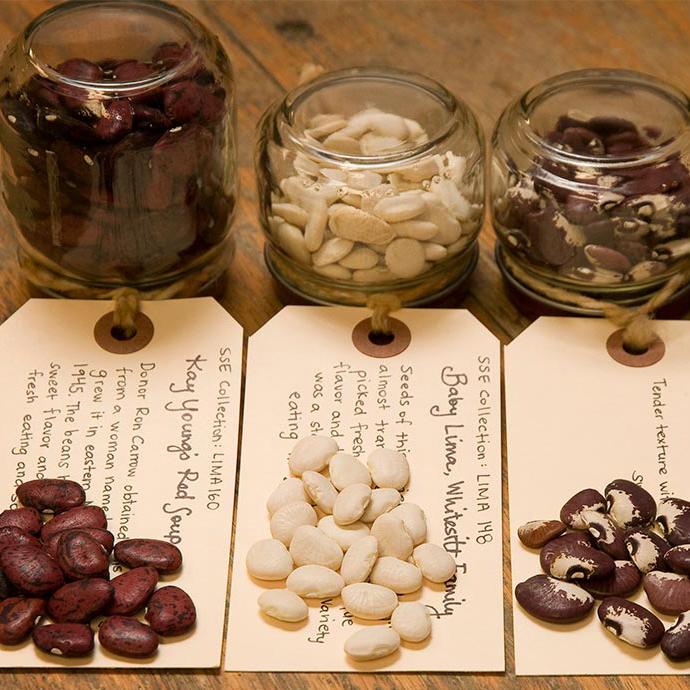Seed Saving Techniques
Growing your own vegetables is a rewarding experience, but have you ever considered saving and preserving the seeds from your favorite heirloom varieties? Seed saving allows you to maintain the unique traits and flavors of these rare plants for future generations. In this article, we will explore various seed saving techniques, as well as delve into the fascinating world of rare heirloom varieties.
1. The Basics of Seed Saving
To successfully save seeds, it’s important to understand some fundamental concepts. First, choose open-pollinated or heirloom plant varieties since hybrid plants may not produce true-to-type offspring. Next, ensure that plants are healthy and disease-free before saving their seeds. Finally, timing is crucial – wait until fruits or vegetables are fully matured before collecting the seeds.
2. Wet Processing Method
Some plants have wet or slimy seed coatings that need to be removed before storage. This method works best for tomatoes and cucumbers. Start by scooping out the seeds along with some pulp from ripe fruits and place them in a container with water. Allow them to ferment for a few days while stirring occasionally; this fermentation process helps break down any germination inhibitors on the seed coat. Rinse off any remaining pulp and spread the clean seeds on a paper towel to dry completely.
3. Dry Processing Method
Dry processing is suitable for crops such as beans, peas, lettuce, and peppers that do not have wet coatings around their seeds. Begin by allowing the fruits or pods to fully ripen on the plant until they turn brown or yellowish in color indicating maturity. Harvest them carefully and allow them to air dry indoors until they become crisp or brittle when crushed between your fingers. Gently separate the seeds from their casings using your hands or by threshing against a hard surface.
4: Proper Storage Techniques
Once your seeds are dry, it’s vital to store them properly to maintain their viability over time. Place the seeds in airtight containers such as glass jars or envelopes, and store them in a cool, dry place away from direct sunlight. Label each container with the plant variety and date of collection to keep track of their age. Additionally, consider adding desiccant packets to absorb any excess moisture.
5: Regional Heirlooms
While many heirloom varieties are well-known, there is an incredible diversity of regional heirlooms around the world. These unique vegetables have been passed down through generations and adapted to specific climates and growing conditions. From Mexico’s Zapotec Pleated Tomato to Italy’s Costoluto Genovese Tomato, exploring these regional gems adds excitement and novelty to your garden.
6: Growing Heirlooms in Small Spaces
Even if you have limited gardening space, you can still enjoy growing heirloom vegetables. Look for compact or dwarf varieties that thrive in containers or small raised beds. Examples include Tiny Tim tomatoes, Minicor carrots, or Charentais melons. Vertical gardening techniques like trellising can also maximize space utilization for climbing plants such as beans or cucumbers.
7: The History and Origins of Heirloom Vegetables
Every heirloom vegetable has its own story – tales of farmers passing down seeds through generations or immigrants bringing cherished varieties from their homelands. These plants often have historical significance and cultural value tied to specific regions or communities. Researching the history behind your favorite heirlooms can deepen your appreciation for their heritage.
8: Preserving Heirloom Seeds for Future Generations
Saving seeds not only ensures a continuous supply of your favorite varieties but also helps preserve biodiversity by safeguarding rare genes within our food system. By sharing saved seeds with other gardeners or participating in seed exchanges, we contribute to the larger movement striving towards seed sovereignty and sustainable agriculture.
9: Organic Pest Control Methods for Heirlooms
Heirloom vegetables can be more susceptible to pests and diseases compared to hybrid varieties. However, it is possible to protect your plants using organic pest control methods. These include companion planting with herbs that repel insects (such as basil or marigold), introducing natural predators like ladybugs or lacewings, and using organic pesticides such as neem oil or insecticidal soaps when necessary.
10: Unique Ways to Enjoy Heirlooms in Recipes
The vibrant flavors and unique characteristics of heirloom vegetables make them a delight in the kitchen. Experiment with recipes that showcase their distinct qualities – from heirloom tomato salads bursting with color and flavor to roasted heirloom carrots glazed with honey and thyme. Get creative in the kitchen by incorporating these gems into soups, sauces, pickles, or even desserts.
In conclusion, seed saving allows us to preserve the rich heritage of rare heirloom varieties for future generations. Whether you have a large garden or limited space, there are numerous techniques available to successfully save seeds from your favorite plants. By exploring regional heirlooms, understanding their history and origins, implementing organic pest control methods, and enjoying them in various recipes, we can fully appreciate the beauty and importance of these unique vegetables. So why not embark on an exciting journey of growing your own heirlooms?


Leave a comment